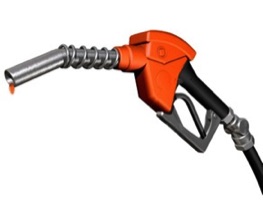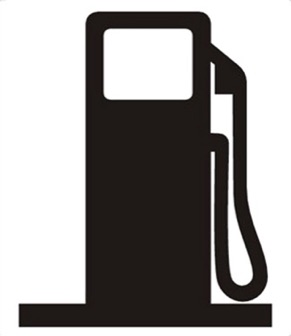
Published in the July 2010 issue of “Die Porsche Kassette”
If you look closely at the gas pump the next time you’re filling up your car’s tank, you’ll see that the different types of octane available at the pump are measured using the (RON + MON) / 2 method. Here in South Florida the typical octane ratings (also known as gasoline grades) are 87, 89, 91 and 93.

But what exactly is octane and who are RON and MON?
When crude oil is “cracked” or refined, it breaks down to produce hydrocarbon chains of different lengths:
Methane (CH4) with one single carbon atom
Ethane (C2H6) with two carbon atoms in the chain
Propane (C3H8) with three carbon atoms in the chain
Butane (C4H10) with four carbon atoms in the chain
Pentane (C5H12) with five carbon atoms in the chain
Hexane (C6H14) with six carbon atoms in the chain
Heptane (C7H16) with seven carbon atoms in the chain
Octane (C8H18) with eight carbon atoms in the chain
Nonane (C9H20) with nine carbon atoms in the chain
Decane (C10H22) with ten carbon atoms in the chain
and others, including Kerosene, Fuel Oil, Lubricating Oils, Grease, Vaseline, Parafin Pitch, Tar and Petroleum Coke, each one with consecutively longer carbon chains with up to 26 or more carbon atoms in the chain as is the case of Petroleum Coke.
In an internal combustion engine, its compression ratio is a single number that can be used to predict the performance of the engine. It is the ratio between the maximum volume of the combustion chamber and cylinder, when the piston is at the bottom of the stroke and the minimum volume when the piston is at the top of its stroke.


In a properly-firing cylinder, the spark plug ignites the air/fuel mixture at just the right time and a flame front starts on one side of the piston and burns across the top to the other side, which creates a rapid and evenly-expanding gas that pushes down on the top of the piston and thus makes the engine rotate its main shaft. When the air/fuel mixture is ignited prior to the spark plug firing as with pre-ignition, the two flame fronts collide, causing a pinging and knocking noise and a loss of peak power.
High performance cars generally have high compression engines, such as the ones found in our normally-aspirated, flat-6 Porsches, because the higher the compression ratio, the more mechanical energy an engine can squeeze from its air/fuel mixture. However, higher compression ratios also make detonation more likely.
An octane number or octane rating is a measure of the resistance of gasoline and other fuels to self-ignite or pre-ignite due to compression in an internal combustion engine. As the compression ratio of an engine increases, so does the required octane number of gasoline if you want to avoid knocking.
In order to account for differences in the performance quality of gasolines, two engine octane numbers are routinely used: The most common type of octane rating worldwide, RON (Research Octane Number – simulates the fuel performance under low severity engine operation) and is determined by running the fuel in a test engine with a variable compression ratio at 600 rpm, and MON (Motor Octane Number – which simulates the fuel performance under more severe engine operation using the same test engine but with a preheated fuel mixture, at 900 rpm and with variable ignition timing to further stress the fuel’s knock resistance). The octane number is then reported as the average therefore we see: RON + MON / 2.
It turns out that heptane (C7H16) handles compression very poorly. Compress it just a bit and it self-ignites spontaneously. Octane (C8H18), on the other hand, handles compression very well – you can compress it quite a bit and nothing happens.
By definition, the RON and MON of n-heptane and iso-octane are exactly 0 and 100.
So, ninety-three-octane gasoline is gas that contains 93% octane and 7% heptane (or some other combination of fuels and additives that have the same performance of the 93/7 combination of octane/heptane.
Other fuels and their RON and MON values are as follows:


An octane number doesn’t relate to the energy content of fuel as some people tend to believe, it is just a measure of the fuel’s tendency to burn in a controlled manner rather than exploding in an uncontrolled manner.
Another misconception that some people have regarding gasoline is that if they use a higher octane level than recommended by the manufacturer they can obtain better gas mileage or higher horsepower. That is not so because switching to a higher octane rating doers not add any more hydrocarbon or oxygen content. The different octane ratings exist so that each particular engine can have the best fuel possible due to its internal design (compression ratio).
However, burning fuel with a lower octane rating than recommended often reduces the power output or efficiency on the engine because of the knocking. Modern Porsches have anti-knocking systems integrated into the engine which are controlled by the ECU (engine control unit or main computer). These systems retard the ignition timing to reduce the tendency to detonate, but by the same token retarding the timing reduces power output and fuel efficiency.
To obtain the maximum power out of your engine, follow the manufacturer’s recommendation for gasoline octane requirements for your particular engine.
For more information, please feel free to visit my web pages at www.PedrosGarage.com.
Happy Porsche’ing,
© 2010 Technolab/PedrosGarage.com


